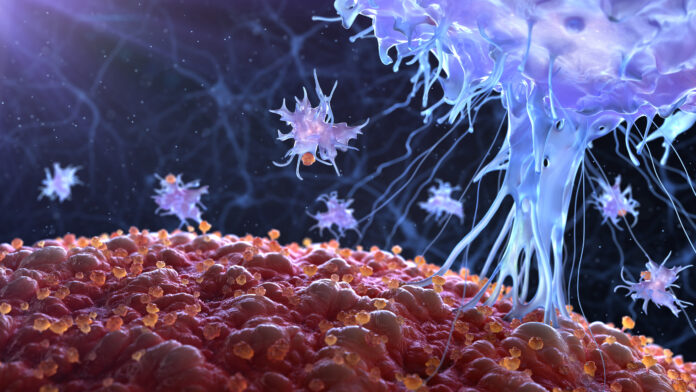
Researchers have created an instruction manual to detect exceptionally rare white blood cells in the immune system, with the ability to identify a single type among a hundred million others.
The protocol describes a way to sensitively tag and enrich B cells that make specific antibodies in order to render them detectable.
The handbook, published in Nature Protocols, could help better understand how allergies develop and also be used to study the efficacy of vaccines.
B cells in the immune system can help fight conditions like cancer and infections but can also cause autoimmune diseases and allergies.
“One of the big problems with trying to study these B cells, the ones that make these antibodies that have all kinds of different and very important functions, is that they’re really, really, rare,” said researcher Josh Koenig, PhD, an assistant professor in the department of medicine at McMaster university.
“It’s hard to find them. And so, you have to have very good tools that will help you study these things.”
The protocol follows on from observations that B cells can be detected by binding their surface antibody receptors with native antigens conjugated to fluorescent probes, which have previously revealed substantial insights into their activation and function.
It describes how four antigen molecules, or tetramers, can be customized to fluorescently tag and enrich antigen-specific B cells for high-resolution analyses.
This provides sufficient resolution to study naïve B cells and IgE-expressing cells by flow cytometry, through which they might otherwise be undetectable.
The selected antigen first undergoes biotinylation. The biotin: antigen ratio is then assessed for optimal tetramer loading and polymerization before being assembled around a streptavidin fluorescent backbone.
The creation of a control tetramer is also described in the protocol to exclude B cells binding to the tetramer backbone.
The researchers further outline a framework to validate whether tetramer probes are detecting true antigen-specific B cells and discuss considerations for experimental design.
The antigen and control tetramers can be constructed in 9 hours, although assessing their specificity could take weeks or months depending on the method of validation.
Samples can be enriched in around two hours but is generally time and cost neutral as fewer cells are run through the flow cytometer.
The isolation of antigen-specific B cells relies on the accurate design of control tetramers that do not share any known cross-reactive epitopes with the target antigen.
The researchers stress that their protocol can be performed by researchers trained in basic biomedical or immunological research techniques and uses equipment commonly found in laboratories.
They maintain: “ A more comprehensive understanding of the phenotype and function of antigen-specific B-lineage cells is a critical step in developing vaccines and identifying therapeutic targets in antibody-mediated diseases such as food allergy.”
However, the team adds: “It is important to note that detection of antigen-specific B cells using this protocol does not confirm a causative role in protection from infection or pathogenesis of disease.
“These reagents allow for high-resolution immunophenotyping of a rare population and support retrieving these cells for downstream applications.”













